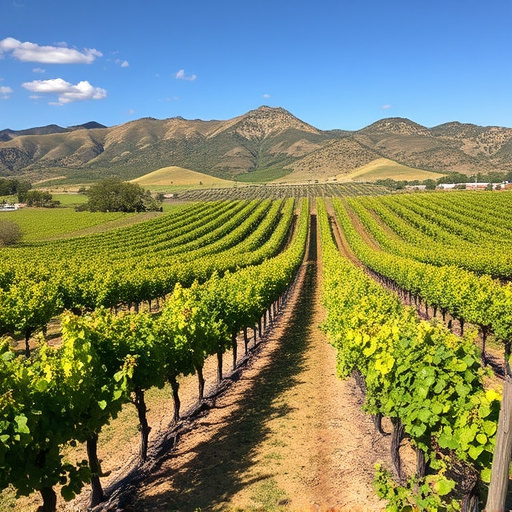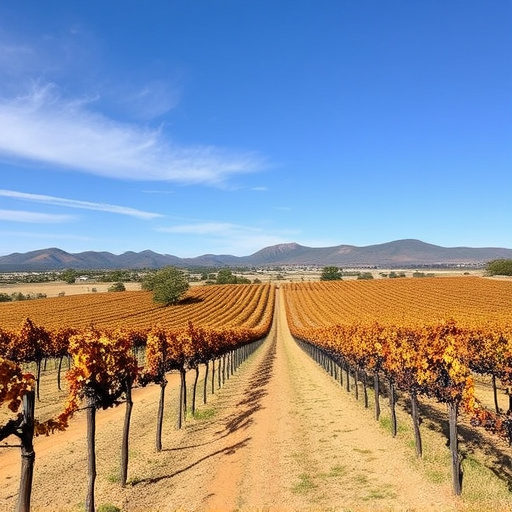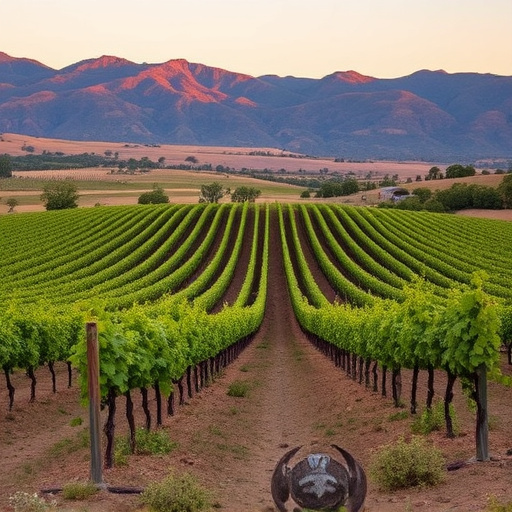In Sonoita, Arizona, microclimates significantly influence the unique characteristics of wines produced in local vineyards. The region's variety of microclimates, shaped by elevation, soil types, and weather patterns, allows winemakers to produce a diverse range of wines, from full-bodied reds to vibrant whites. This makes Sonoita a must-visit destination for wine enthusiasts exploring Arizona's thriving viticultural scene, featuring notable vineyards in sonoita az.
“Uncover the enchanting world of microclimates in the Sonoita region of Arizona, where neighboring vineyards offer a fascinating glimpse into terroir diversity. This article delves into the unique characteristics of microclimate wines, exploring their distinct flavors and aromas. From the bustling landscape to behind-the-scenes production techniques, we navigate the intricate process that makes each vineyard’s wine a testament to its specific environment. Discover how these nearby Sonoita az vineyards unlock a symphony of tastes, offering a true sensory journey.”
- Understanding Microclimates: Unlocking Unique Wine Characteristics in Sonoita
- The Vineyard Landscape of Sonoita, Arizona: A Diverse Terroir
- Comparative Tasting: Exploring the Flavors and Aromas of Nearby Vineyards
- Behind the Scenes: Production Techniques and Their Impact on Wine Quality
Understanding Microclimates: Unlocking Unique Wine Characteristics in Sonoita

In the world of viticulture, microclimates play a pivotal role in shaping the unique characteristics of wines. When it comes to vineyards in Sonoita, Arizona, this concept becomes especially intriguing. Each vineyard within the region experiences subtle variations in temperature, sunlight exposure, and wind patterns, creating distinct microclimates that influence grape growth and flavor development. These local conditions contribute to the diversity of wines produced, making a visit to Sonoita a true sensory exploration for wine enthusiasts.
Sonoita’s neighboring vineyards showcase how these microclimates can differ significantly even over relatively short distances. For instance, one vineyard nestled in a valley may enjoy warmer nights, encouraging slower grape ripening and enhancing sugar accumulation, while a hilltop vineyard might face more exposure to cool evening breezes, slowing down the ripening process and preserving acidity. This variety of microclimates allows wine producers to craft wines with distinctive profiles, from rich, full-bodied reds to crisp, vibrant whites, all within the same region.
The Vineyard Landscape of Sonoita, Arizona: A Diverse Terroir
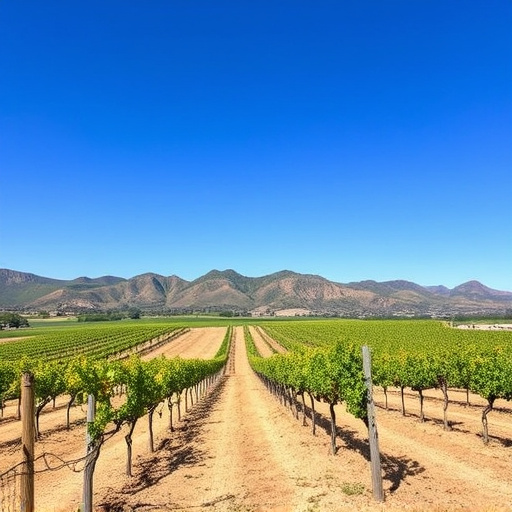
The Sonoita region of Arizona is a picturesque landscape dotted with vineyards, each offering a unique microclimate and terroir that contributes to the distinctive character of its wines. This vibrant wine country is characterized by rolling hills, diverse soil types, and varying elevations, all playing a pivotal role in shaping the flavors found in the area’s vintages.
The vineyard landscape here encompasses a wide range of microclimates, from cooler, higher-altitude regions to warmer, lower-lying areas. This diversity allows for an array of grape varieties to thrive, resulting in a rich tapestry of wines. The unique terroirs, influenced by factors like sun exposure, wind patterns, and local geology, ensure that each vineyard produces wines with their own distinct flavors, aromas, and structures, making the Sonoita region a true haven for wine enthusiasts exploring Arizona’s thriving viticultural scene.
Comparative Tasting: Exploring the Flavors and Aromas of Nearby Vineyards
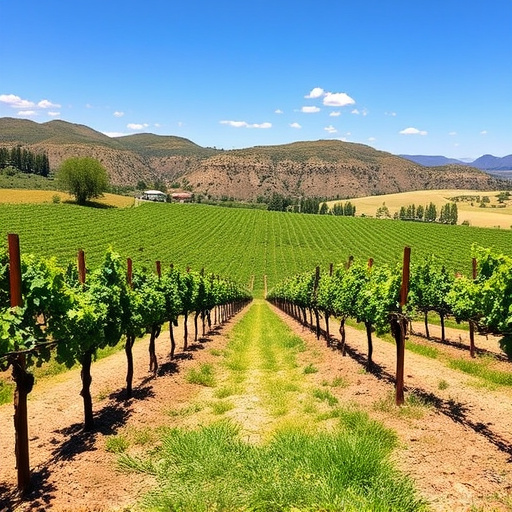
When visiting the vibrant vineyards in Sonoita, AZ, one cannot help but notice the distinct microclimates shaping each vineyard’s unique character. A comparative tasting experience allows wine enthusiasts to delve into these subtle differences. By sampling wines from neighboring farms, visitors can embark on a sensory journey through the region’s diverse landscapes.
Each vineyard, nestled in its own microclimate, contributes to the complexity of flavors and aromas. Some wines showcase the sun-kissed warmth of exposed slopes, while others reflect the cooler influences of shaded canyons. This variety is a testament to Sonoita’s ability to produce distinctive wines that capture the essence of their specific origins, making it a true haven for wine aficionados exploring the region’s diverse vineyards.
Behind the Scenes: Production Techniques and Their Impact on Wine Quality
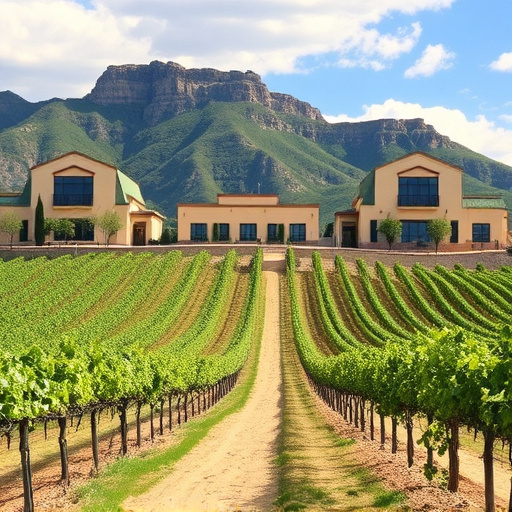
In the heart of Arizona’s Sonoita region, vineyards thrive amidst diverse microclimates, each contributing unique characteristics to the wines they produce. Behind the scenes, winemakers employ a myriad of techniques to harness these local conditions, significantly influencing the final quality and distinctiveness of their offerings. From row coverage and trellising systems to canopy management and harvest timing, these strategies are tailored to capture specific microclimate benefits.
For instance, vineyards nestled in sun-drenched slopes may opt for canoping techniques to moderate temperature and reduce sunburn, while those in cooler valleys might delay harvest to achieve optimal sugar levels and complex flavor profiles. These production methods not only ensure the preservation of terroir but also foster a rich tapestry of wine styles, making Sonoita a captivating destination for wine enthusiasts exploring the diverse expressions of Arizona’s viticultural landscape.
The vineyards of Sonoita, Arizona, offer a captivating journey through diverse microclimates, each contributing distinct characteristics to the region’s renowned wines. By exploring these neighboring vineyards, we uncover a complex tapestry of flavors and aromas that reflect the unique terroirs. Understanding the microclimate’s influence on grape growing and wine production techniques further emphasizes the significance of this area as a premier wine destination for those seeking exceptional vintages from the vibrant Sonoita region.

